Folliculitis is an inflammation or infection of the hair follicles,
the small openings that surround the roots of your strands of hair. It
can affect one or more hair follicles, anywhere on your body that hair
grows.
The thighs, buttocks, neck and armpits are most often affected because friction is common in these areas.
The bacteria called Staphylococcus aureus often cause bacterial folliculitis. It also can be caused by yeast or other types of fungus.

Some other factors that can cause folliculitis are a weakened immune system, irritation due to shaving and ingrown hair, regularly wearing tight clothing, poor hygiene and skin conditions like acne and dermatitis. People who are obese are also more likely to develop this problem.
The most common signs and symptoms of folliculitis include pimples or pus-filled bumps that crust over; a large swollen mass or bump; inflamed and red skin; pain or tenderness; and burning, swelling, or itchy skin.
Folliculitis is not a serious issue and usually goes away on its own within a week or two. But it can be irritating, painful and embarrassing, depending on the location of this condition. Severe infections can cause permanent hair loss and scarring.
There are many simple yet effective home remedies that can provide relief from the symptoms and accelerate the healing process.
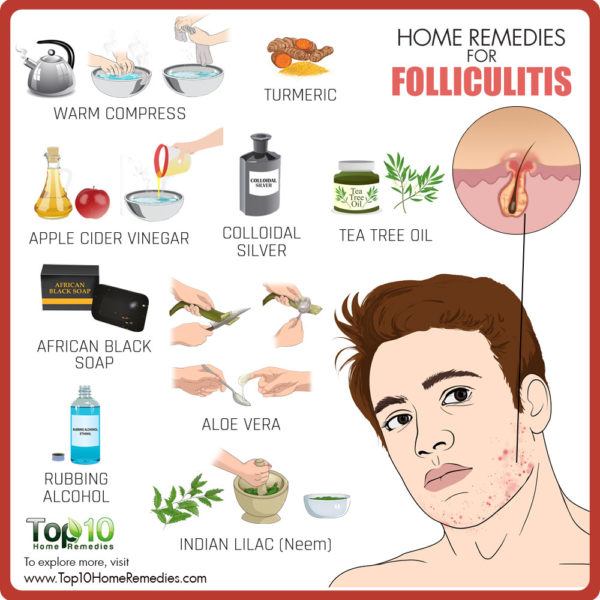
Here are the top 10 home remedies for folliculitis.
A warm compress will also increase circulation to the affected area, which aids the healing process.
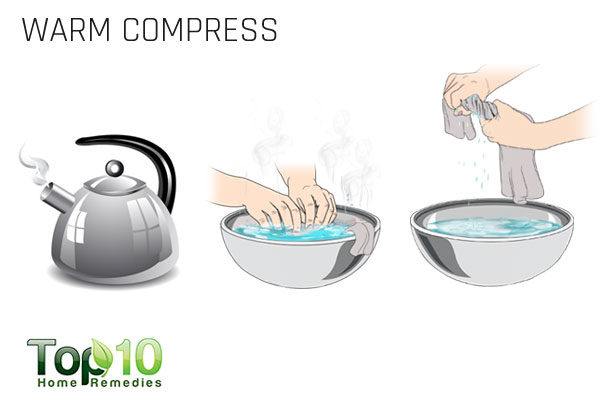
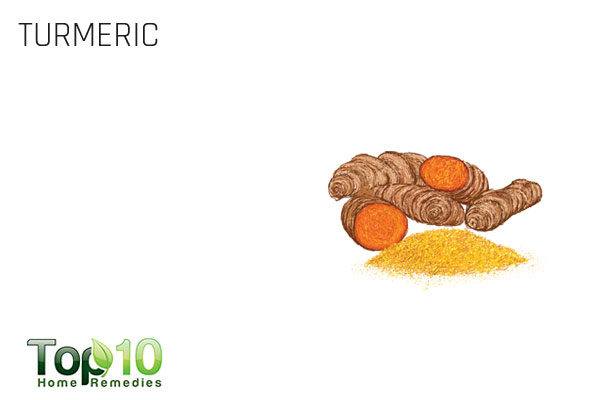
Turmeric also has anti-inflammatory properties that help reduce swelling, itching and pain.
It contains antibacterial, antiseptic and antiviral properties, which means it can deal with the cause of the problem. Plus, it is effective at reducing inflammation and itching.
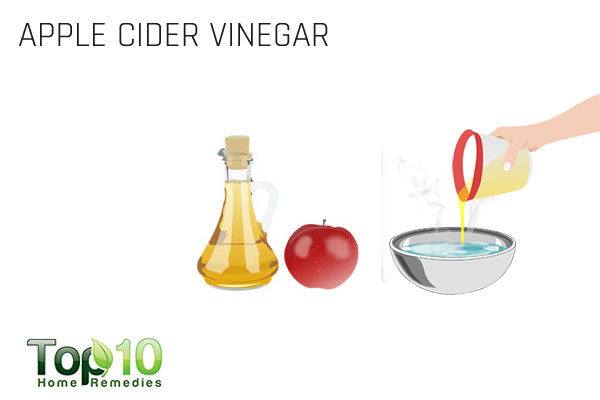

Plus, it’s nontoxic and it starts working almost immediately!
Due to its antibacterial and antiseptic properties, tea tree oil helps clear up the infection faster when used on a regular basis. It also reduces the redness and itchiness.

This natural soap contains healing ingredients like palm oil, cocoa, coconut oil, shea butter and vitamin E that also help keep the affected area moisturized. It offers quick relief from itchiness, pain and inflammation.

Not just folliculitis, it is also effective at treating acne, psoriasis, eczema, dermatitis and dry skin.
Due to its disinfectant properties, it helps clear the infection and promote faster healing. Plus, its soothing and cooling properties help relieve discomforting symptoms.
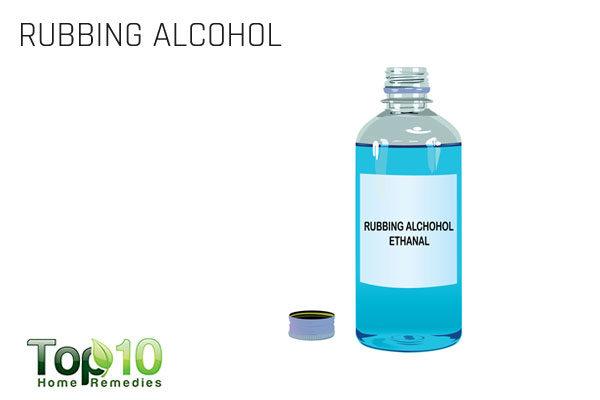
It is also effective at easing the symptoms of extreme itching, pain and inflammation.
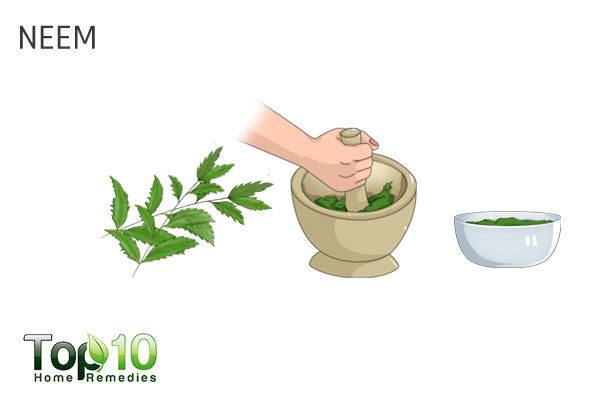
It also keeps the skin moisturized and helps maintain the pH balance of the skin, both of which aid healing.
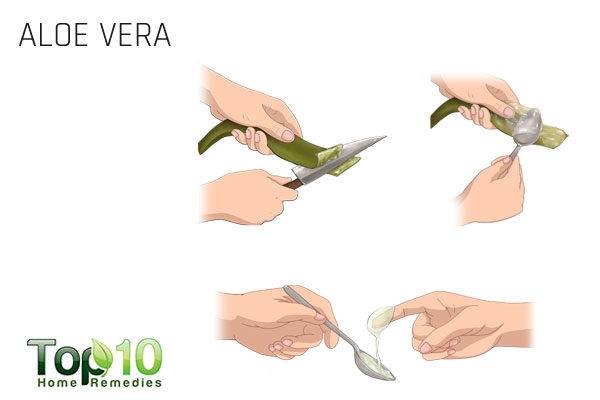
It contains potent antibacterial properties in the form of carvacrol and terpenes. Plus, it contains thymol, which has natural fungicide and antiseptic properties.

Further, its antioxidant, anti-inflammatory and pain-relieving properties aid in faster recovery.
Additional Tips
Source Click here
The thighs, buttocks, neck and armpits are most often affected because friction is common in these areas.
The bacteria called Staphylococcus aureus often cause bacterial folliculitis. It also can be caused by yeast or other types of fungus.

Some other factors that can cause folliculitis are a weakened immune system, irritation due to shaving and ingrown hair, regularly wearing tight clothing, poor hygiene and skin conditions like acne and dermatitis. People who are obese are also more likely to develop this problem.
The most common signs and symptoms of folliculitis include pimples or pus-filled bumps that crust over; a large swollen mass or bump; inflamed and red skin; pain or tenderness; and burning, swelling, or itchy skin.
Folliculitis is not a serious issue and usually goes away on its own within a week or two. But it can be irritating, painful and embarrassing, depending on the location of this condition. Severe infections can cause permanent hair loss and scarring.
There are many simple yet effective home remedies that can provide relief from the symptoms and accelerate the healing process.

Here are the top 10 home remedies for folliculitis.
Contents
1. Warm Compress
When you suffer from folliculitis, the first step you need to take is apply a warm compress on the affected area. This will help calm the irritation and reduce pain.A warm compress will also increase circulation to the affected area, which aids the healing process.

- Boil 2 cups of water with 1 teaspoon of salt in it, then let the water cool down a bit.
- Soak a hand towel in the solution and wring out the excess water.
- Place the warm, moist towel on the affected area for 10 minutes at a time.
- Repeat 3 to 5 times a day.
2. Turmeric
Turmeric that you use in cooking is also a good remedy for folliculitis. This herb is a strong and effective natural antibiotic that works against staph bacteria, one of the main causes of this problem.
Turmeric also has anti-inflammatory properties that help reduce swelling, itching and pain.
- For topical use, mix ½ teaspoon of turmeric with enough coconut or olive oil to form a paste. Apply it on the affected area. After 1 or 2 hours, rinse off the turmeric paste and reapply. Do this until the infection is gone.
- For internal use, add 1 teaspoon of turmeric powder to a glass of warm milk and drink it twice daily.
- Turmeric can be taken in the form of a supplement, too. Consult your doctor for the correct dosage.
3. Apple Cider Vinegar
Another inexpensive and easy-to-use home treatment for folliculitis is apple cider vinegar.It contains antibacterial, antiseptic and antiviral properties, which means it can deal with the cause of the problem. Plus, it is effective at reducing inflammation and itching.

- For topical use, combine 1 part of raw, unfiltered apple cider vinegar with 2 parts of lukewarm water. Use a cotton ball to apply this solution on the irritated skin. Let it sit for 10 minutes, then rinse it off. Apply some coconut oil to keep the area moisturized.
- For internal use, add 1 to 2 teaspoons of raw, unfiltered apple cider vinegar to a glass of lukewarm water. Drink it 1 or 2 times a day.
4. Colloidal Silver
Colloidal silver is another simple yet effective home remedy. It is effective against bacteria and fungi, hence it can deal with the root cause of the problem.
Plus, it’s nontoxic and it starts working almost immediately!
- For topical use, apply 2 or 3 drops of colloidal silver on the affected area. Cover the site with a bandage. Reapply twice daily.
- For internal use, add 1 to 2 teaspoons of colloidal silver to a glass of filtered water and drink it twice daily, preferably on an empty stomach. Continue for 1 month to destroy all the harmful bacteria and fungi within the body.
5. Tea Tree Oil
Tea tree oil is effective at treating different skin infections, including folliculitis.Due to its antibacterial and antiseptic properties, tea tree oil helps clear up the infection faster when used on a regular basis. It also reduces the redness and itchiness.

- Mix 5 drops of tea tree oil in 2 to 3 tablespoons of olive or coconut oil. Massage this oil on the affected area and rinse it off after 1 to 2 hours. Repeat once daily.
- Alternatively, put 1 or 2 drops of tea tree oil onto a moistened cotton swab and dab it gently on the affected area. Allow it to sit for 1 hour before rinsing it off with cool water. Repeat twice daily.
6. African Black Soap
For relief from folliculitis, you can give African black soap a try.This natural soap contains healing ingredients like palm oil, cocoa, coconut oil, shea butter and vitamin E that also help keep the affected area moisturized. It offers quick relief from itchiness, pain and inflammation.

Not just folliculitis, it is also effective at treating acne, psoriasis, eczema, dermatitis and dry skin.
- Use pure, organic African black soap to wash the affected skin at least twice daily.
- If the folliculitis is on your scalp, you can use African black soap as a shampoo to wash your hair a few times a week.
7. Rubbing Alcohol
Rubbing alcohol also works well as a home remedy for folliculitis.Due to its disinfectant properties, it helps clear the infection and promote faster healing. Plus, its soothing and cooling properties help relieve discomforting symptoms.

- Soak a cotton swab in rubbing alcohol (70 percent strength) and gently dab it on the affected area.
- Leave it on for 10 minutes.
- Rinse the affected area with lukewarm water.
- Do this twice daily for 3 or 4 days only.
8. Indian Lilac
Indian lilac, also known as neem, contains antibacterial and antibiotic properties that help destroy the harmful bacteria responsible for folliculitis.It is also effective at easing the symptoms of extreme itching, pain and inflammation.

- Grind a handful of neem leaves into a paste. Apply it on the affected area. Leave it on for at least 30 minutes before rinsing it off. Do this a few times a day.
- Also, you can boil neem leaves in water until the quantity of water reduces to one-third. Use this water to wash the affected area a few times daily.
- Another option is to mix a few drops of neem oil in 1 tablespoon of coconut oil. Apply it on the affected area, leave it on for 20 minutes, then rinse it off. Do this 2 or 3 times a day.
9. Aloe Vera Gel
Aloe vera gel is another natural folliculitis treatment, due to its potent antibacterial and anti-inflammatory properties that help treat the cause and relieve the burning and itching sensations.It also keeps the skin moisturized and helps maintain the pH balance of the skin, both of which aid healing.

- Cut open an aloe vera leaf and remove the gel. Apply this pure gel on the affected area and leave it on for 1 hour. Use it twice daily for 1 week.
- Alternatively, thoroughly mix ½ cup of aloe vera gel and the juice of half a lemon. Apply it on the affected area. Wait 30 minutes, then rinse it off with lukewarm water. Do this once daily for about 1 week.
10. Oil of Oregano
Oil of oregano is another effective natural treatment for folliculitis and other skin problems.It contains potent antibacterial properties in the form of carvacrol and terpenes. Plus, it contains thymol, which has natural fungicide and antiseptic properties.

Further, its antioxidant, anti-inflammatory and pain-relieving properties aid in faster recovery.
- For topical use, mix 8 to 10 drops of oregano oil in 2 tablespoons of olive oil. Apply it on the affected area and leave it on for a couple of hours. Then, wash it off with lukewarm water and pat dry the area thoroughly. Do it 3 or 4 times a day.
- For internal use, mix 2 or 3 drops of oregano oil in a glass of water. Drink it twice daily for 1 week.
Additional Tips
- You can also try over-the-counter antibiotics in gel or cream form.
- Until the infection is cleared up, avoid shaving if possible. If you need to shave, use an electric razor and shave in the direction of the hair growth.
- Avoid tight clothes to reduce friction between your skin and clothing.
- Avoid using public hot tubs and heated pools. If you own a hot tub, clean it regularly.
- To prevent folliculitis from spreading, maintain skin hygiene by taking a bath or shower daily with a mild soap. Always take a shower after you exercise and after you work around chemicals.
- Wash your hands frequently.
- Avoid overuse of skin oils or makeup, which can trap bacteria in your pores.
- Use a mild lotion that doesn’t clog your pores but will keep your skin moisturized.
- Drink an ample amount of filtered water daily to prevent dehydration and stimulate the immune system to prevent further infection.
- Do not share towels, washcloths or other personal items while you have this infection.
- Change your bedsheets as often as you can and wash them in hot water.
- Don’t scratch the bumps.
Source Click here
Comments
Post a Comment